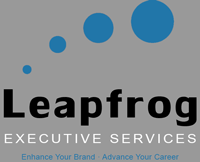“Until” is Now
Category : 2020
Like an annoying relative that comes for a weekend visit and stays for three months, what we thought was temporary has become life as we know it. Six weeks ago, statements like…
- When things get back to normal,
- I’m doing this until,
- We found a workaround, and
- This is only temporary
…were logical and expected explanations. As the Covid-19 pandemic gains new ground and economic uncertainty takes on alarming dimensions, professionals committed to success recognize that much of what was judged temporary has become the way we now live and work.
More than ever, executives must lead forward, not around. It is time to replace temporary plans implemented in May with strategies that chart a course for 9 or 12 months, or even longer. Businesses and those who lead them can no longer afford to engage with customers or employees using an “until things get back to normal” mindset. This is normal and leaders face the responsibility of creating agile plans that create a path for growth and achievement with the assumption circumstances will not change dramatically for the foreseeable future. The past three months have shown us that, in many cases, the model of work and engagement used in the past is not necessary and, in some environments, not viable.
Leaders will benefit from helping people embrace four new dynamics we can’t ignore.
How We Talk
Mindsets drive language. How a leader views a crisis defines how the leader responds to and speaks in the crisis. While there is a heightened need to invest time in showing empathy and care when connecting with video-fatigued employees, it’s time to stop beginning calls with a review of the latest cycle of bad news. Without turning on the sunshine pump and ignoring the magnitude of the situation, leaders can choose words that convey confidence, courage, and hope—while remaining firmly anchored in reality. Shorter and more frequent connections with teams and clients will improve effectiveness. If a phone call will work—use it to reduce video overload.
Where We Work
It’s time to move beyond conducting team and client video conferences from a setting that shouts “this is the corner in the house I claimed.” If what is behind you when you are on-camera doesn’t look professional, invest in a $50 green screen or black backdrop from Amazon. If lighting doesn’t provide a clear view of your face, invest another 50 bucks in some small video lights. If your laptop’s camera is grainy, order a high-definition video camera. Demand may require that you pay twice or three times the normal price, but the investment is worth it. And while you’re at it, improve eye contact on video calls by looking into the lens of your camera rather than at the screen.
How We Engage
Rather than fighting the digitization of job functions and the expansion of AI, leaders can help people let technology do what it does best—free people to do what technology can’t do. Technology isn’t designed to make people feel heard, understood, respected, and valued—the four driving needs of every human on the planet. People do that. Leaders do that. The current environment gives leaders—and those they lead the unprecedented opportunity to transform their roles to provide greater value than being purveyors of data and information.
On the client side, give clients what they need while you wait for them to need what you sell. Clients are struggling to find a path to the future as well. They need expertise, new insights, and connections with other leaders that can help them determine the best path forward. Keep researching your client’s business and their clients’ needs. Use your expertise to help clients become better thought leaders in their industries. Are you wishing you could take a client to lunch? Ask them where they like to eat in the city where they live and order lunch to be delivered to their house. Do the same for yourself and enjoy the virtual business lunch together. It may be a long time before you enjoy the luxury of a meal in a restaurant or your business club.
To be continued…
